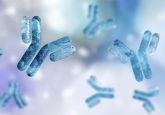Assessing biosimilarity using 2D-NMR

An international team of researchers have carried out the first-ever laboratory study of four versions of a therapeutic protein drug, manufactured by living cells, to assess the atomic structures of biosimilar products. The variation in biosimilars must be minimal if they are to be approved by regulatory agencies, as slight changes in structure can lead to changes in efficiency and toxicity. The team used 2D-NMR for their work, finding minimal variation in each drug. The findings were published recently in Nature Biotechnology.
A biosimilar is a biological product, which is defined as “highly similar to an FDA-approved biological product, and has no clinically meaningful differences in terms of safety and effectiveness.” For a biosimilar to be approved by regulatory agencies only minor differences in clinically inactive components are allowed.
Unlike most small-molecule drugs, which are produced by chemical synthesis, biological drugs are produced by living systems and are composed of large complex protein molecules. As the biological drugs are produced by biological systems the production of exact duplicates is impossible meaning biosimilars must be shown to achieve the same safety, purity and potency as the original (reference) product (in layman’s terms the same clinical effect).
In the current study, scientists at the NIST (USA), FDA’s Center for Drug Evaluation, and Research (USA), the Medicinal Products Agency of Sweden (Sweeden) and Health Canada’s Center for Biologics Evaluation (Canada), used 2D-NMR to analyze the atomic structures of a reference filgrastim product and three unapproved biosimilars, all independently manufactured. Filgrastim is a biological drug used to combat infection and anemia in cancer patients, licensed in the USA. In the study six different NMR instruments, made by two manufacturers, were used.
The data from each lab’s analyses were gathered, with statistical analyses conducted to determine the correlation of data from all six instruments. The team found little variation over all six instruments. The experimentally determined precision limit was 8 parts per billion for the interlaboratory comparison, which is well below the threshold at which structural differences in protein structure might be obscured. It was therefore concluded that the atomic structure of all four filgrastim versions were highly similar and within the tight precision limits of the NMR data.
The team at NIST also repeated measurements on all four samples after one year to assess the drugs stability. They used the same 2D-NMR method, finding no significant structural changes in any of the biologics.
In the next phase of work NIST and 30 laboratories on five different continents will compare 2D-NMR measurements of monoclonal antibodies that the NIST is developing as a reference material. Monoclonal antibodies are the largest class of approved protein therapeutics; the use of 2D-NMR in their analysis would represent a huge landmark in their analytical characterization.
Sources: H. Ghasriani, DJ Hodgson, RG Brinson et al. Precision and Robustness of 2D-NMR for Structure Assessment of Filgrastim Biosimilars. Nature Biotechnology (DOI: 10.1038/nbt.3474) (2016); Assessing the Biosimilarity of Protein Drugs: New Study Shows Method’s Precision at Atomic Resolution



